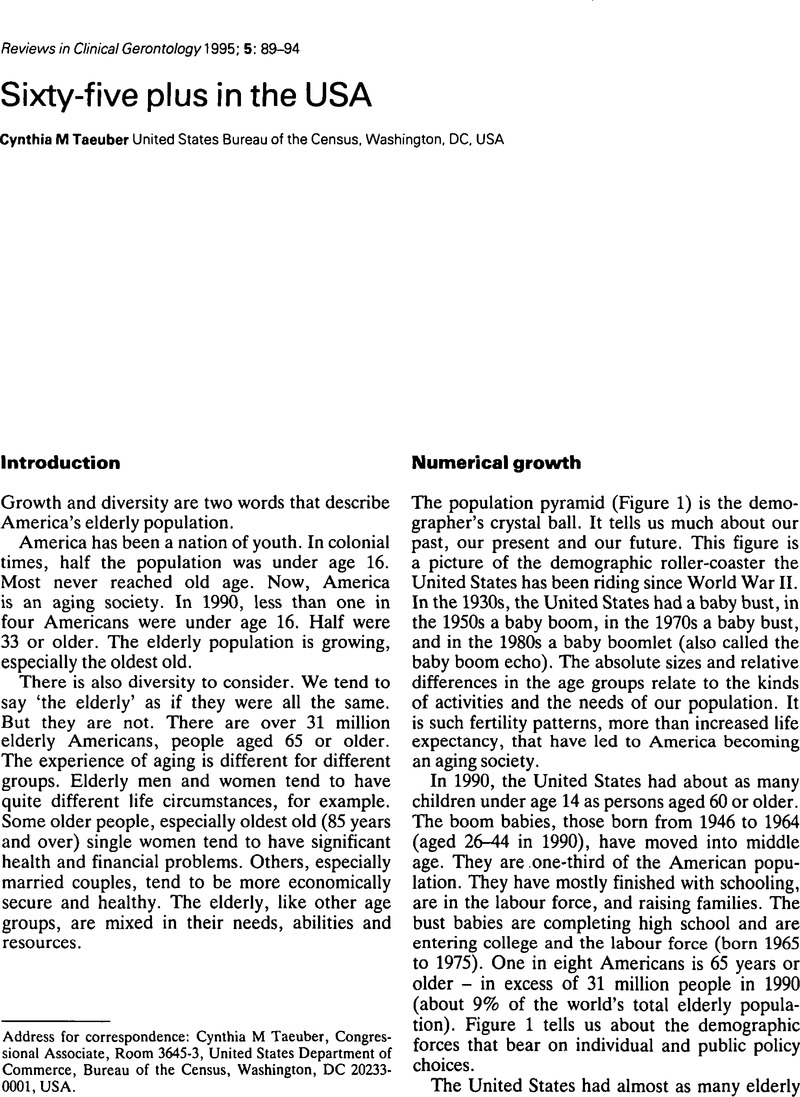No CrossRef data available.
Article contents
Sixty-five plus in the USA
Published online by Cambridge University Press: 17 November 2008
Abstract
An abstract is not available for this content so a preview has been provided. Please use the Get access link above for information on how to access this content.

- Type
- Social and psychological gerontology
- Information
- Copyright
- Copyright © Cambridge University Press 1995
References
1 Das Gupta, P. US Bureau of the Census, unpublished calculations using the Extinct Generation Method of estimation.Google Scholar
2 McNeil, JM. Americans with disabilities: 1991–1992. In: US Bureau of the Census. Current population reports, P70–33. Washington, DC: US Government Printing Office, 1993: Tables E and 7.Google Scholar
3 Manton, KG, Corder, L, Stallard, E. Changes in the use of personal assistance and special equipment from 1982 to 1989: results from the 1982 and 1989 NLTCS. Gerontologist 1993; 33 (2): 168–76.CrossRefGoogle ScholarPubMed
4 Casper, LM, Hawkins, M, O'Connell, M. Who's minding the kids? In: Current population reports, P70–36. Washington, DC: US Government Printing Office, 1994: Table E.Google Scholar
5 Saluter, AF. Marital status and living arrangements: 03 1992. In: US Bureau of the Census. Current population reports, P20–468. Washington, DC: US Government Printing Office: xii.Google Scholar


